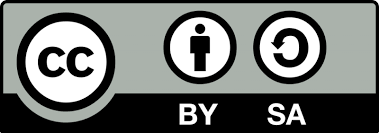La enseñanza básica. Más allá de la obligatoriedad y la gratuidad
DOI:
https://doi.org/10.23824/ase.v0i38.775Descargas
Resumen
La modificación de la LOE por la LOMLOE trae aparejados cambios importantes a la hora de concebir y aplicar el currículo en la enseñanza básica, pues la aparición del Perfil de salida del alumnado al término de la misma y el Diseño universal de Aprendizaje demanda prácticas acordes al desempeño competencial en un contexto altamente comprensivo e inclusivo.
Por ello, en el presente artículo se pretende realizar una exposición, enfocada a partir de la enseñanza básica, para analizar como este derecho básico transita desde su prestación obligatoria y gratuita hasta la generación de las condiciones que garanticen continuidad, coordinación y cohesión entre las dos etapas de la educación básica.
Alcanzada ya su universalización interesa, entonces, examinar qué aprende y cómo se evalúa al alumnado, así como el tratamiento de las posibles barreras que pueden impedir el aprendizaje.
Referencias
Education Scotland (2020). Interdisciplinary Learning: ambitious learning for an increasingly complex world. Recuperado de https://education.gov.scot/
CAST (2018). Universal Design for Learning Guidelines version 2.2. Recuperado de http://udlguidelines.cast.org
D´Oliveira, G. (coord.) (2017). Perfil dos Alunos à Saída da Escolaridade Obrigatória. Recuperado de: http://bit.ly/2JN3PrD.
Elizondo, C. (2020). Hacia la inclusión educativa en la Universidad: diseño universal para el aprendizaje y la educación de calidad. Ediciones Octaedro.
Fullan, M. (2002a). Las fuerzas del cambio (Vol. 5). Ediciones AKAL.
Fullan, M. (2002b). El significado del cambio educativo: un cuarto de siglo de aprendizaje. Profesorado, revista de currículum y formación del profesorado, 6(1).
Fullan, M. (2004). Las fuerzas del cambio: la continuación (Vol. 8). Ediciones AKAL.
Graham, C. (2019). Pillars, lintels and foundations: A conference starting paper. The Royal Society of Edinburgh. Recuperado de https://www.rse.org.uk/
Guba y Lincoln (1989). Fourth Generation Evaluation. London: Sage Publications.
MacDonald, B. (1983). La Evaluación y el Control de la Educación. En Gimeno, J. y Pérez, A. La Enseñanza, su Teoría y su Práctica. Madrid: Akal.
Ministerio de Educación y Formación Profesional (2021a). Propuesta de estructura curricular para la elaboración de las enseñanzas mínimas de la Secretaria de Estado de Educación. Recuperado de https://fe.ccoo.es/
Ministerio de Educación y Formación Profesional (2021b). Perfil de salida del alumnado al término de la educación básica. Documento base. Marco curricular de la LOMLOE de la Secretaria de Estado de Educación. Recuperado de https://www.magisnet.com/
Ministerio de Educación y Formación Profesional (2020). La reforma del currículo en el marco de la LOMLOE. Documento base. Claves para el diálogo. Recuperado en: https://educagob.educacionyfp.gob.es/
Montero Alcaide, A. (2021). Currículo y autonomía pedagógica. Enseñanzas mínimas, comunes y currículo básico. REICE. Revista Iberoamericana sobre Calidad, Eficacia y Cambio en Educación, 19 (2), 23-36. https://doi.org/10.15366/reice2021.19.2.002
Martín, H. R. (2020). ¿Cómo aprendemos?: una aproximación científica al aprendizaje y la enseñanza (Vol. 1). Graó.
Scriven, M. and Roth, J. (1978), Needs assessment: Concept and practice. New Directions for Program Evaluation, 1978: 1-11. https://doi.org/10.1002/ev.1196
Stufflebeam, D. L., y Shinkfield, A. J. (1987). Evaluación sistemática: guía teórica y práctica. Paidós.
Tyler, R. W. y de Vedia, E. M. (1973). Principios básicos del currículo, Buenos Aires, Troquel.
Cómo citar
Número
Sección
Publicado
Palabras clave:
enseñanza básica, competencias clave, descriptores operativos, evaluación, promoción, inclusión, diseño universalLicencia
Derechos de autor 2022 José Francisco Pérez

Esta obra está bajo una licencia internacional Creative Commons Atribución-CompartirIgual 4.0.

Reconocimiento-CompartirIgual CC BY-SA
Aquellos autores/as que tengan publicaciones con esta revista, aceptan los términos siguientes:
a) Los autores/as conservarán sus derechos de autor, el cuál estará simultáneamente sujeto a la Licencia de reconocimiento de Creative Commons que permite a otros re-mezclar, modificar y desarrollar sobre tu obra incluso para propósitos comerciales, siempre que te atribuyan el crédito y licencien sus nuevas obras bajo idénticos términos.
b) Los autores/as conservarán los derechos de explotación de la propiedad intelectual del presente trabajo, y en especial los derechos de reproducción, distribución, transformación en cualquiera de sus modalidades y comunicación pública de dicha obra, el cuál estará simultáneamente sujeto a la Licencia de reconocimiento de Creative Commons que permite a otros re-mezclar, modificar y desarrollar sobre tu obra incluso para propósitos comerciales, siempre que te atribuyan el crédito y licencien sus nuevas obras bajo idénticos términos.
Acceda al Resumen de la Licencia

